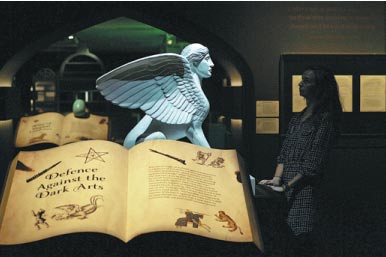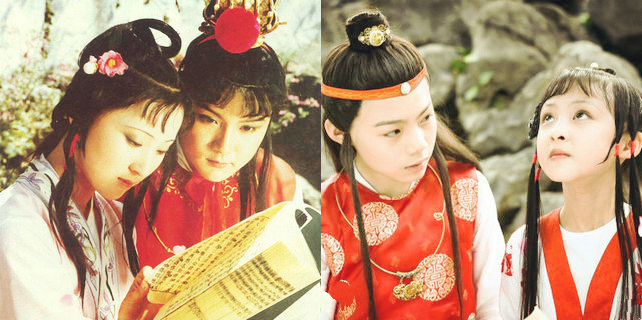Harry Potter exhibition marks 20th anniversary of first book
 |
|
Visitors attend the press preview of the exhibition Harry Potter: A History of Magic at the British Library in London last week. [Photo/Agencies] |
LONDON-Harry Potter fans owe a debt of gratitude to Alice Newton.
Alice was 8 years old when her father, a Bloomsbury Publishing executive, brought home a new manuscript for her to read.
"The excitement in this book made me feel warm inside," she scrawled in a note to her dad. "I think it is probably one of the best books an 8/9 year old could read."
Based on this glowing review, Bloomsbury published Harry Potter and the Philosopher's Stone, launching a literary juggernaut that brought magic to a generation of children.
Alice's penciled note is part of the British Library's new exhibition, Harry Potter: A History of Magic. The show, which coincides with the 20th anniversary of the publication of J.K. Rowling's first book, is an unabashed celebration of the stories and their antecedents.
"There are some rich historical traditions behind the magic in the Harry Potter stories, which J.K. Rowling was aware of," says Alexander Lock, one of the exhibit curators, who adds that he was impressed with Rowling's ability to layer information and offer depth. "They go into the stories and make them so rich."
The exhibition, which opened on Friday, includes Rowling's outline for the book, her personal drawings of characters and a map of Hogwarts School of Witchcraft and Wizardry.
It also looks at magic and the nature of belief, revealing that many of the things Harry Potter fans thought were imaginary were actually based in fact-or folklore. It includes rare books and manuscripts from around the world, together with cauldrons, broomsticks, crystal balls and potion manuals that offer insight into Rowling's inspiration and how the books came to be.
"I've taken liberties with folklore," Rowling says in a video that opens the show.
The show is divided into rooms based on the subjects studied at Hogwarts, the setting for Rowling's novels following the adventures of Harry, the orphan who learns at age 11 that he is a wizard. Sections include Potions, Herbology, Divination, Care of Magical Creatures and Defense Against the Dark Arts.
Each section touches on the legends and beliefs that Rowling wove into her stories, with historical objects illustrating the scholarship behind the narrative.
The potions section, for example, features a Bronze Age/Iron Age Battersea Cauldron on loan from the British Museum. It sits beneath cauldron light fixtures that flicker in the subdued light and offer the viewer a chance to get into the Halloween-like aura of it all.
There is also a display about alchemy, the medieval forerunner of chemistry, which features the Ripley Scroll, a 6-meter long manuscript from the 1500s that describes how to make a Philosopher's Stone.
Nearby is the tombstone of Nicolas Flamel, a real alchemist who features as a character in Rowling's first book, and various witch accoutrements.
Another display about astronomy includes a celestial globe made in 1693-as well as 21st-century augmented reality technology supplied by Google Arts & Culture to help visitors examine the ancient constellations that gave their names to key Harry Potter characters, such as Sirius Black and Draco Malfoy.
Being hosted at the British Library meant the exhibition featured some amazing books-on palmistry, tea leaf reading-and, of course, witches.
Tanya Kirk, another co-curator, says working on the exhibition gave her a whole new appreciation of witches. "I think all of the things I learned about witches is that they get quite a bad rap through history, and it was quite hard to find positive accounts," she says with a laugh. "The Harry Potter books have done a lot to change that."
The exhibition runs from Oct 20 to Feb 28, 2018. It will then travel to New York to celebrate the 20th anniversary of the release of Harry Potter and the Sorcerer's Stone, the book's title in the United States.
ASSOCIATED PRESS
















